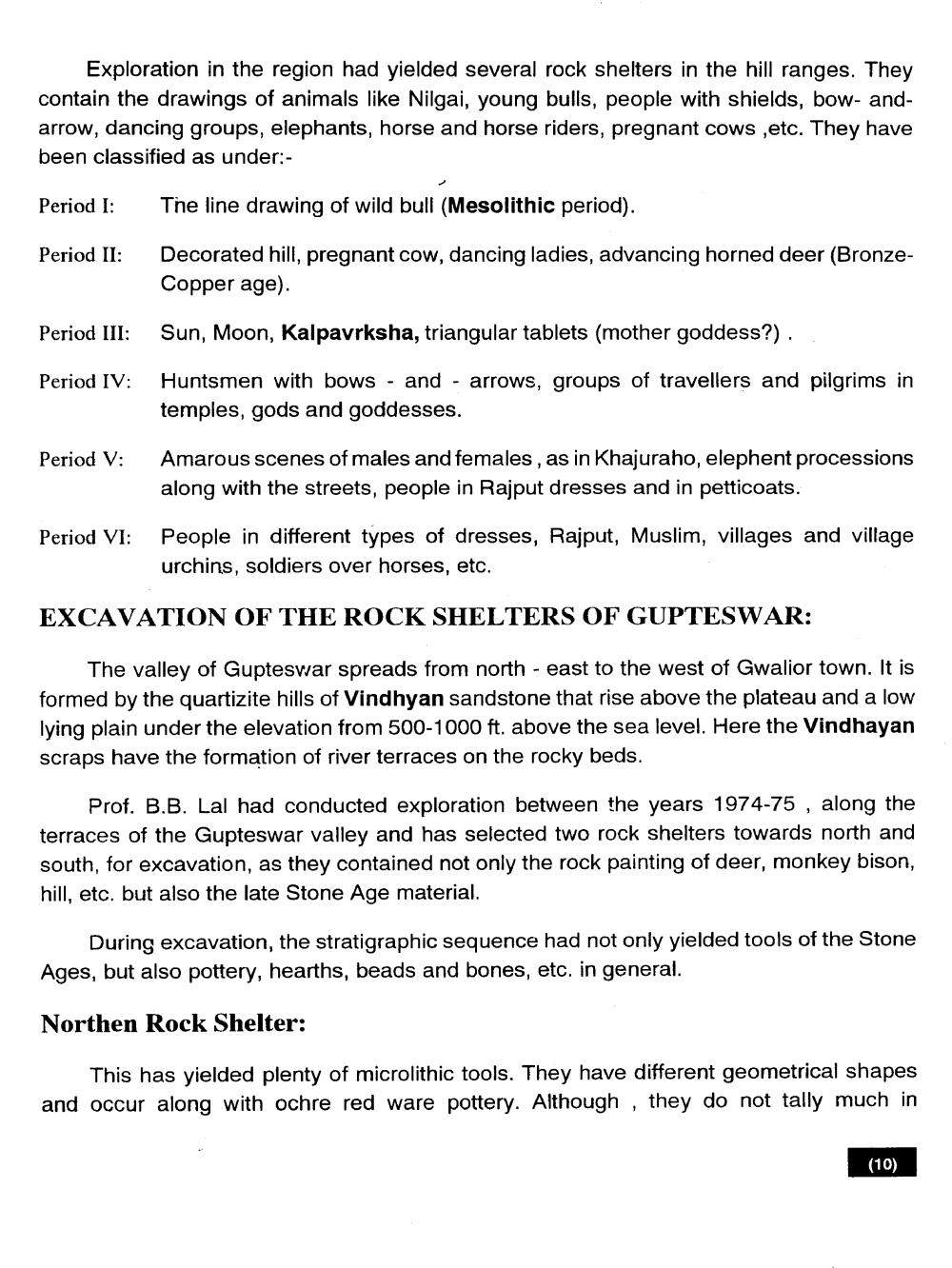________________
Exploration in the region had yielded several rock shelters in the hill ranges. They contain the drawings of animals like Nilgai, young bulls, people with shields, bow-andarrow, dancing groups, elephants, horse and horse riders, pregnant cows ,etc. They have been classified as under:
Period I:
The line drawing of wild bull (Mesolithic period).
Period II:
Decorated hill, pregnant cow, dancing ladies, advancing horned deer (BronzeCopper age).
Period III:
Sun, Moon, Kalpavrksha, triangular tablets (mother goddess?).
Period IV:
Huntsmen with bows - and - arrows, groups of travellers and pilgrims in temples, gods and goddesses.
Period V:
Amarous scenes of males and females, as in Khajuraho, elephent processions along with the streets, people in Rajput dresses and in petticoats.
Period VI:
People in different types of dresses, Rajput, Muslim, villages and village urchins, soldiers over horses, etc.
EXCAVATION OF THE ROCK SHELTERS OF GUPTESWAR:
The valley of Gupteswar spreads from north-east to the west of Gwalior town. It is formed by the quartizite hills of Vindhyan sandstone that rise above the plateau and a low lying plain under the elevation from 500-1000 ft. above the sea level. Here the Vindhayan scraps have the formation of river terraces on the rocky beds.
Prof. B.B. Lal had conducted exploration between the years 1974-75 , along the terraces of the Gupteswar valley and has selected two rock shelters towards north and south, for excavation, as they contained not only the rock painting of deer, monkey bison, hill, etc. but also the late Stone Age material.
During excavation, the stratigraphic sequence had not only yielded tools of the Stone Ages, but also pottery, hearths, beads and bones, etc. in general.
Northen Rock Shelter:
This has yielded plenty of microlithic tools. They have different geometrical shapes and occur along with ochre red ware pottery. Although, they do not tally much in
(10)




